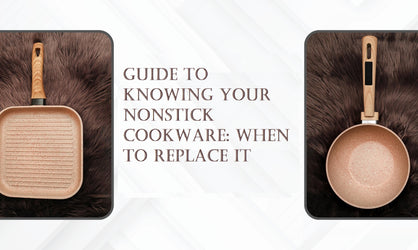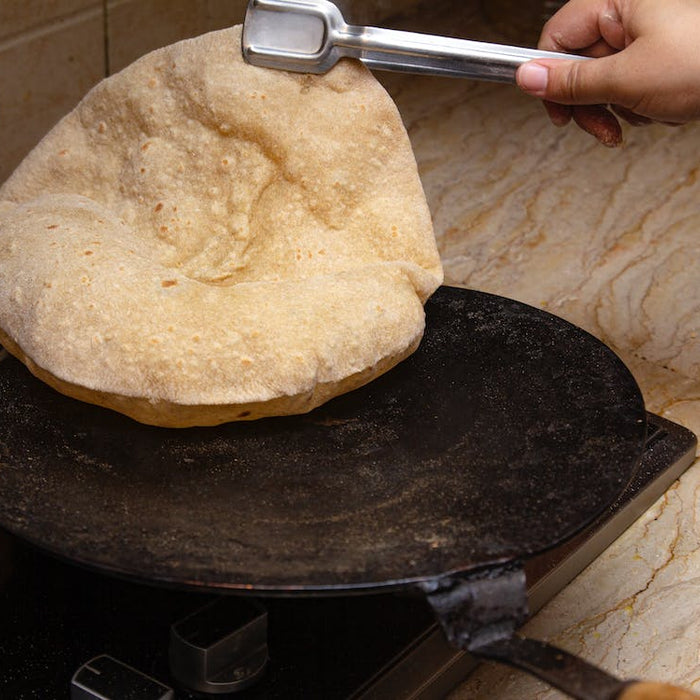
When to Replace Nonstick Cookware: Your Comprehensive Guide
Nonstick cookware is a type of kitchen equipment that has been treated with a special coating to prevent food from sticking to the surface during cooking. This coating is typically made of polytetrafluoroethylene (PTFE), which is commonly marketed under the brand name Teflon. Nonstick cookware has gained popularity due to its convenience and the ability to cook with less oil or fat.

When Should You Replace Your Nonstick Cookware?
Nonstick cookware, while convenient, does have a limited lifespan. Over time, the nonstick coating can wear out, leading to reduced performance and potential health concerns. Here's a guide on when to consider replacing your nonstick cookware:
1. When the Nonstick Coating is Damaged:
- What: Look for signs of damage such as peeling, chipping, or scratching on the nonstick surface.
- When: Replace your cookware if the nonstick coating is visibly damaged. Cooking with damaged nonstick surfaces can lead to the release of harmful chemicals into your food.
2. When Food Starts Sticking:
- What: If you find that food is sticking to the surface despite using oil or butter, it may indicate that the nonstick coating is deteriorating.
- When: When your nonstick cookware loses its nonstick properties and food starts sticking, it's time for a replacement.
3. After Several Years of Use:
- What: Nonstick coatings have a limited lifespan, even with proper care. The more you use your nonstick cookware, the quicker the coating will wear out.
- When: Consider replacing nonstick cookware every 3-5 years, depending on usage. If you cook frequently, replacement may be necessary sooner.
4. If You Notice Flaking or Peeling:
- What: Flakes or small bits of the nonstick coating appearing in your food are a clear sign that the cookware needs replacement.
- When: If you see flakes in your food, discontinue use immediately and replace the cookware.
5. When the Surface Becomes Uneven:
- What: An uneven or warped surface can lead to uneven cooking and hotspots.
- When: If the surface of your nonstick pan becomes warped or uneven, it's time to invest in new cookware.
6. If You Have Health Concerns:
- What: There has been some concern about the potential health risks associated with overheating nonstick cookware, as it can release toxic fumes.
- When: If you're worried about these health risks, consider switching to other types of cookware like stainless steel or cast iron.
Where Can You Find Replacement Nonstick Cookware?
You can find replacement nonstick cookware at a variety of retailers, including department stores, kitchen specialty stores, and online marketplaces. When shopping for new nonstick cookware, consider factors like brand reputation, warranty, and customer reviews.
Who Should Replace Nonstick Cookware?
Anyone who uses nonstick cookware should be aware of the signs that indicate when it's time for a replacement. This knowledge is essential for maintaining the quality of your cookware and ensuring safe and healthy cooking.
Why is Replacing Nonstick Cookware Important?
Replacing nonstick cookware at the right time is crucial for several reasons:
- Safety: Damaged nonstick coatings can release harmful chemicals into your food.
- Cooking Performance: Worn-out nonstick surfaces lead to uneven cooking and sticking.
- Health Concerns: Overheating nonstick cookware can potentially release toxic fumes.
Which Brands Offer Quality Nonstick Cookware?
Several reputable brands offer high-quality nonstick cookware. Some well-known brands include T-fal, Calphalon, All-Clad, and Cuisinart. It's important to research and choose a brand that aligns with your specific needs and budget.
Whose Responsibility is it to Replace Nonstick Cookware?
The responsibility to replace nonstick cookware typically falls on the owner or user of the cookware. Regularly inspect your nonstick cookware for signs of wear and tear, and be proactive about replacing it when necessary to ensure safe and effective cooking.
In conclusion, knowing when to replace your nonstick cookware is essential for both your safety and the quality of your cooking. By paying attention to signs of wear and following these guidelines, you can enjoy the benefits of nonstick cookware while minimizing potential risks. Remember that safety and health should always be a priority in your kitchen.
MACclite Premium Cookware offers a remarkable nonstick option in the Indian market. Known for its superior quality and performance, MACclite's nonstick cookware stands out for its exceptional durability and ease of use. These cookware sets are designed to provide a hassle-free cooking experience, with food effortlessly sliding off the surface, reducing the need for excessive oil or fat. Whether you're preparing delicate omelets or searing steaks, MACclite's nonstick cookware ensures consistent and reliable results every time. Its premium quality materials and thoughtful engineering make it a popular choice among home cooks and professional chefs alike, making it a valuable addition to kitchens across India.
Featured collection
-
Original price - Original priceOriginal price Rs. 19.99Rs. 19.99-Current price Rs. 19.99
Product title
Original price - Original priceOriginal price Rs. 19.99Rs. 19.99-Current price Rs. 19.99 -
Original price - Original priceOriginal price Rs. 19.99Rs. 19.99-Current price Rs. 19.99
Product title
Original price - Original priceOriginal price Rs. 19.99Rs. 19.99-Current price Rs. 19.99 -
Original price - Original priceOriginal price Rs. 19.99Rs. 19.99-Current price Rs. 19.99
Product title
Original price - Original priceOriginal price Rs. 19.99Rs. 19.99-Current price Rs. 19.99 -
Original price - Original priceOriginal price Rs. 19.99Rs. 19.99-Current price Rs. 19.99
Product title
Original price - Original priceOriginal price Rs. 19.99Rs. 19.99-Current price Rs. 19.99 -
Original price - Original priceOriginal price Rs. 19.99Rs. 19.99-Current price Rs. 19.99
Product title
Original price - Original priceOriginal price Rs. 19.99Rs. 19.99-Current price Rs. 19.99
Blog posts
-
-

What is Karahi or Kadahi? Exploring Its Best Use in 2024 | Non Stick
The kadai or karahi holds a special place, when it comes to Indian cooking,choose MACclite kadai cookware for a healthier and more enjoyable cooking experience.Read now -

Best Tawa for Roti 2024 - Guide to Choosing the Best Iron Tawa for Your Family
The roti tawa is the right tool to achieve the ideal texture and taste. Finding the perfect roti tawa for your family can be both rewarding and challenging in 2024 due to the many options available.Read now


